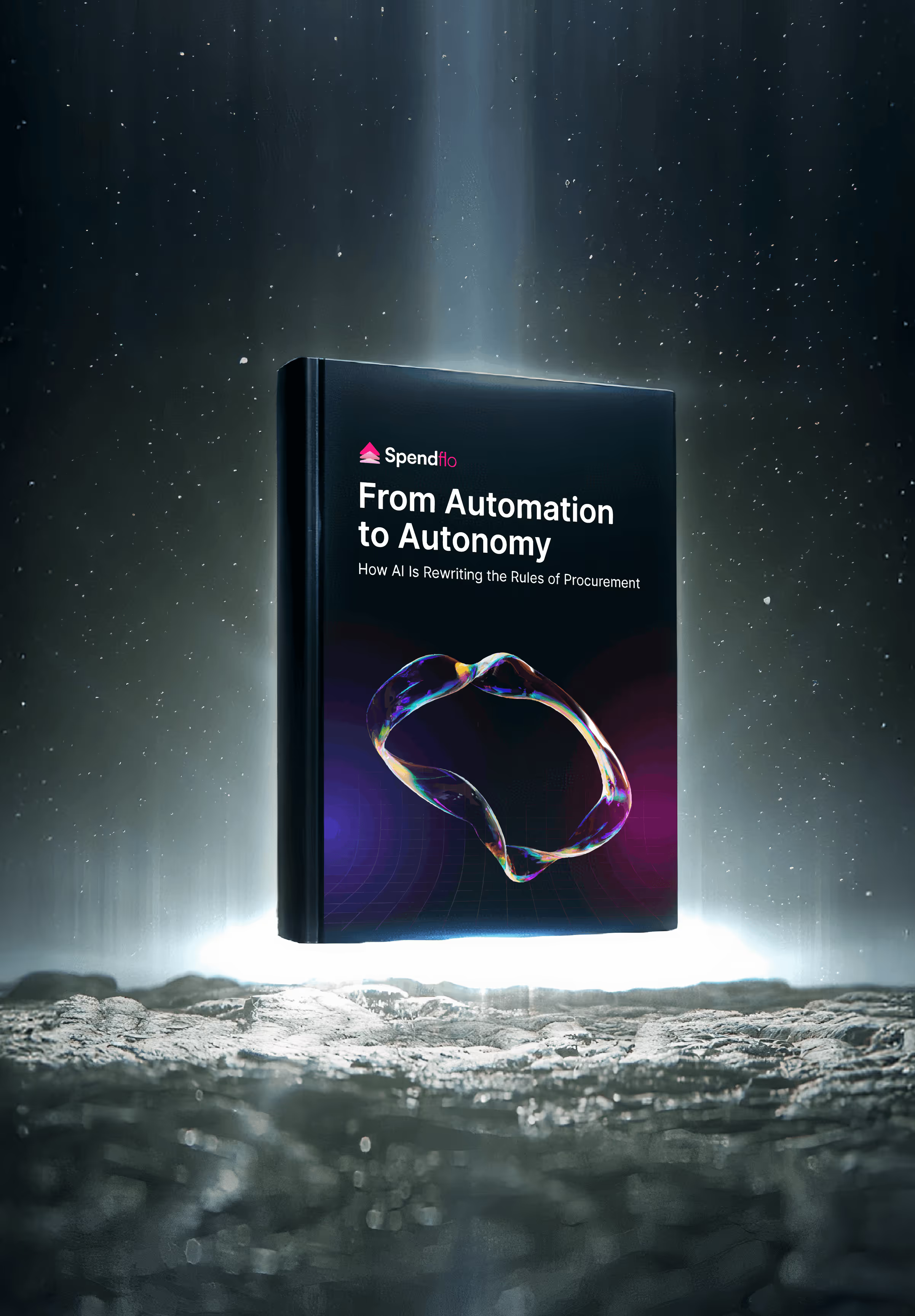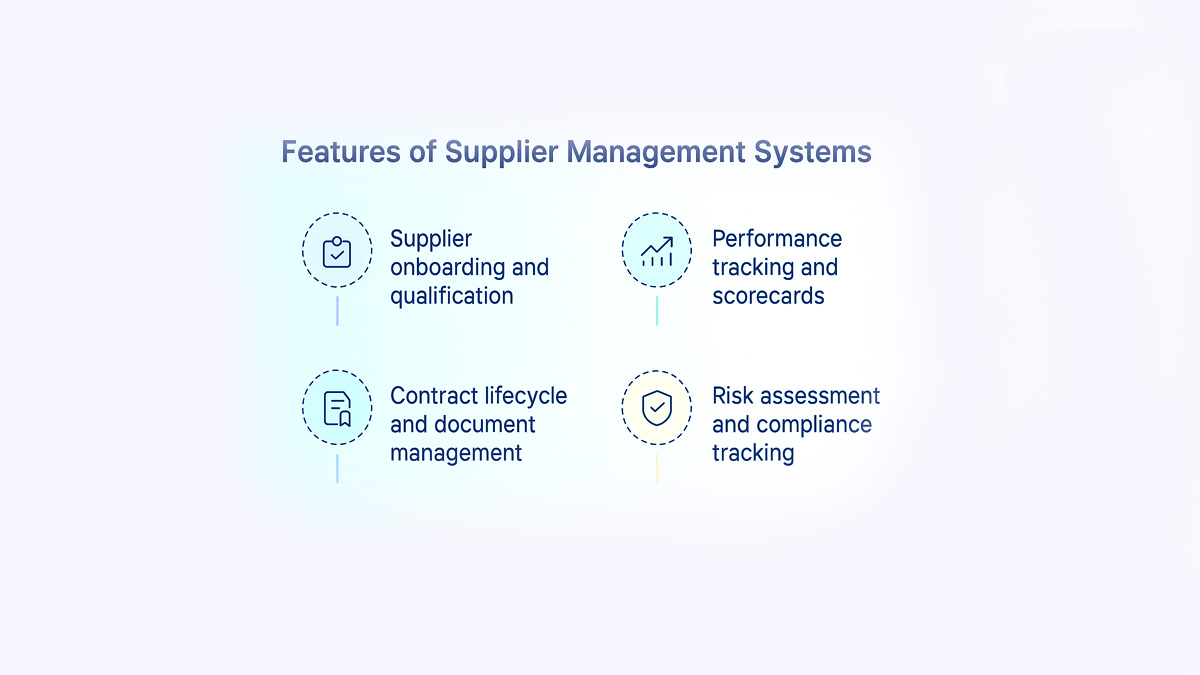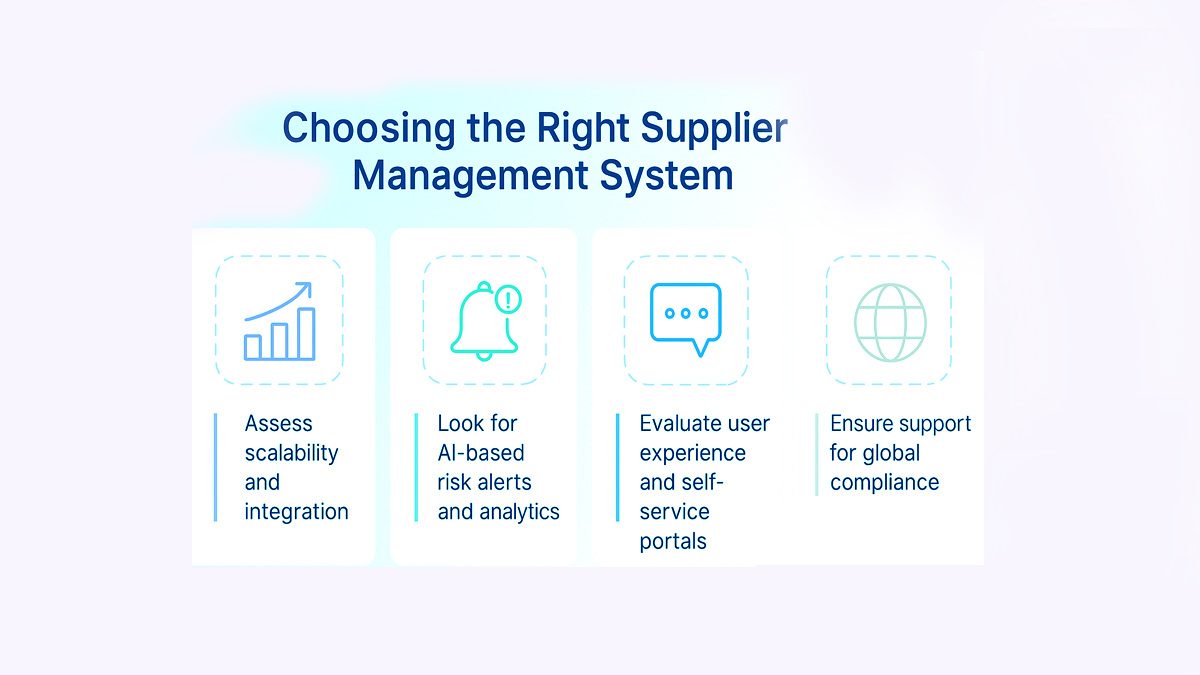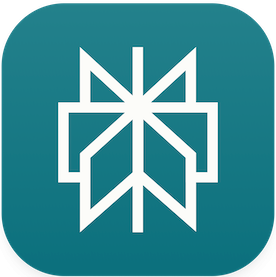

Top 11 Supplier Management Systems to Consider in 2025

Top 11 Supplier Management Systems to Consider in 2025
Discover 11 top supplier management systems for 2025 that boost efficiency, reduce risk, and streamline supplier lifecycle management.


Suppliers play a critical role in the success of any business. But as supplier networks grow more complex, managing them efficiently becomes a serious challenge. That’s where a supplier management system (SMS) steps in. These systems help companies streamline supplier relationships, reduce risk, and ensure consistent performance - all while saving time and improving transparency.
What this blog will cover:
- What is a supplier management system?
- Key features of an effective supplier management system
- Benefits of centralizing supplier data and workflows
- Top 11 supplier management systems to consider in 2025
- How to choose the right supplier management system
- How Spendflo helps with supplier management
- Frequently asked questions on supplier management systems
What is a Supplier Management System?
A supplier management system is a digital platform that helps businesses oversee the entire supplier lifecycle - from onboarding and performance tracking to risk assessment and compliance - by centralizing data, streamlining workflows, and improving collaboration across teams.
Key Features of an Effective Supplier Management System
An effective supplier management system goes beyond simple contact tracking. It supports every stage of the supplier lifecycle through automation, centralized vendor data, and actionable insights. Let’s explore the must-have features that define a modern platform.

Supplier Onboarding and Qualification
The system should streamline onboarding with self-service portals, automated data entry, and digital document control. It ensures vendors meet compliance standards before any engagement begins.
Performance Tracking and Scorecards
Tracking supplier performance through real-time dashboards, performance analytics, and automated scorecards helps identify underperformers and reward high performers. Metrics may include delivery timelines, quality, and issue resolution speed.
Contract Lifecycle and Document Management
Efficient platforms manage the full contract lifecycle - from negotiation to contract renewal - while supporting documentation sharing, version control, and audit tracking in one secure place.
Risk Assessment and Compliance Tracking
Built-in tools for risk identification, global tax compliance, and audit readiness help businesses stay aligned with regulatory requirements and mitigate supply chain vulnerabilities.
Benefits of Centralizing Supplier Data and Workflows
When supplier information is scattered across emails, spreadsheets, and siloed systems, mistakes happen. Centralizing supplier data and workflows into a single digital platform eliminates those gaps - and unlocks real value across the organization.
Improved Collaboration and Communication
With everyone accessing the same platform, cross-functional teams - procurement, finance, compliance - can collaborate in real-time. Shared dashboards and communication tools keep conversations transparent and on record.
Better Risk Mitigation and Compliance
Centralized systems allow for consistent tracking of compliance documents, certifications, and risk assessments. Automated alerts and audit trails ensure that no regulation or renewal is overlooked.
Real-Time Insights for Strategic Decisions
Integrated analytics and real-time dashboards give decision-makers a clear picture of supplier performance, contract status, and risk exposure - helping them act faster and smarter.
Greater Efficiency and Reduced Manual Effort
Automating repetitive tasks like data entry, document routing, and approval workflows minimizes human error. It frees up teams to focus on vendor performance and strategic work.
Top 11 Supplier Management Systems to Consider in 2025
As supplier ecosystems grow more complex, choosing the right system can be the difference between streamlined operations and costly inefficiencies. Here are the top supplier management platforms to explore in 2025 - starting with Spendflo.
1. Spendflo
Spendflo is a modern SaaS procurement and supplier management platform built to give finance and procurement teams complete visibility and control over their software and vendor relationships. It combines strategic sourcing with real-time analytics to optimize cost, reduce risk, and streamline procurement cycles.
What it does best: End-to-end supplier lifecycle management with embedded negotiation services.
Ideal for: Mid-size to enterprise
Pricing: Custom pricing based on company size and procurement needs. Demo required.
Top features:
- Centralized supplier repository
- Real-time dashboards and supplier scorecards
- AI-powered risk alerts and compliance tracking
- Contract lifecycle and renewal workflows
- Automated onboarding and approval workflows
- Spend analysis and benchmarking
- Audit-ready reporting and documentation
- Integration with ERPs, Slack, and procurement tools
2. SAP Ariba
SAP Ariba is an enterprise-grade solution known for its robust procurement and supplier management capabilities. It integrates seamlessly with SAP ERP systems.
What it does best: Deep integration with ERP and sourcing modules.
Ideal for: Large enterprises with complex supply chains.
Pricing: Custom quote via SAP sales.
Top features:
- Supplier performance management
- Risk mitigation
- Contract lifecycle
3. Coupa
Coupa is a leading spend management platform that offers supplier tracking, procurement automation, and compliance support - all in one interface.
What it does best: Unified spend visibility and controls.
Ideal for: Global companies needing scalable procurement tools.
Pricing: Custom pricing based on modules used.
Top features:
- Supplier risk scoring
- Contract management
- Spend analysis
4. Ivalua
Ivalua focuses on strategic supplier relationship management and offers a flexible, modular platform with deep configurability.
What it does best: End-to-end supplier relationship workflows.
Ideal for: Enterprises with custom procurement processes.
Pricing: Subscription-based; contact sales.
Top features:
- Supplier onboarding
- Document management
- Supplier performance
5. GEP SMART
GEP SMART is an AI-powered procurement suite that helps businesses manage suppliers, contracts, and risk through one interface.
What it does best: Unified procurement and supplier intelligence.
Ideal for: Large, globally distributed teams.
Pricing: Available on request.
Top features:
- AI-based risk alerts
- Supplier collaboration tools
- Contract tracking
6. Precoro
Precoro is a lightweight procurement platform ideal for companies looking for simplicity and fast implementation.
What it does best: Simplifying supplier and PO workflows.
Ideal for: SMBs and startups
Pricing: Starts at $39/user/month.
Top features:
- Supplier database
- Approval routing
- Integration with QuickBooks
7. Kissflow Procurement Cloud
Kissflow offers a flexible procurement and supplier management solution that’s easy to customize and deploy. It emphasizes usability and low-code configuration.
What it does best: Customizable workflows with user-friendly UI.
Ideal for: Mid-sizes companies seeking easy adoption.
Pricing: Starts at $1,990/month for the procurement suite.
Top features:
- Supplier onboarding
- Workflow automation
- Supplier directory
8. Jaggaer
Jaggaer provides a comprehensive supplier lifecycle management solution, with strong capabilities for global supply chains and compliance-heavy industries.
What it does best: Managing global supplier compliance and risks.
Ideal for: Regulated industries like healthcare, education, and manufacturing.
Pricing: Quote available upon request.
Top features:
- Risk management
- Contract compliance
- Vendor scorecards
9. Vendr
Vendr specializes in SaaS vendor management and buying as a service. It offers strong capabilities around negotiation and renewal tracking for software tools.
What it does best: SaaS supplier negotiations and renewals.
Ideal for: Companies focused on SaaS spend optimization.
Pricing: Annual subscription; custom pricing based on SaaS spend volume.
Top features:
- Renewal calendars
- Price benchmarking
- Vendor insights
10. SynerTrade
SynerTrade provides digital procurement tools that support supplier evaluation, sourcing, and collaboration, with a focus on performance and innovation.
What it does best: Integrated sourcing and supplier analytics.
Ideal for: Innovation-driven organizations.
Pricing: Tailored to organizational size and scope.
Top features:
- Supplier portals
- KPI dashboards
- Contract lifecycle tools
11. Zycus
Zycus is a widely recognized name in source-to-pay solutions, with a mature supplier management module that supports compliance and automation.
What it does best: End-to-end supplier and contract visibility.
Ideal for: Large organizations with complex vendor ecosystems.
Pricing: Contact sales for custom quotes.
Top features:
- Supplier information management
- Compliance dashboards
- Audit tracking
How to Choose the Right Supplier Management System
With so many supplier management tools on the market, choosing the right one can feel overwhelming. The key is to find a system that not only fits your current needs but can also scale with your business as supplier networks grow and compliance demands evolve.

Assess Scalability and Integration
Your chosen system should grow with your operations. Whether you're onboarding 50 suppliers or 5,000, the platform must scale effortlessly. Seamless integration capabilities with your ERP, procurement, supply chain management tools, and finance applications is also non-negotiable. Look for platforms that offer open APIs and native integrations.
Look for AI-Based Risk Alerts and Analytics
Risk never sleeps. The best systems use AI to flag issues proactively - whether it's a compliance lapse, financial instability, or delivery delays. Advanced analytics and automated scorecards provide continuous vendor risk assessment, benchmarking and early warnings.
Evaluate User Experience and Self-Service Portals
The best systems streamline vendor onboarding with self-service features that reduce friction. Clunky interfaces kill adoption. Opt for platforms that offer intuitive dashboards and let suppliers manage their own profiles, certifications, and documents via secure self-service portals.
Ensure Support for Global Compliance
If you operate across regions, choose a system that helps track global tax compliance, local regulations, and data protection requirements - without creating bottlenecks.
How Spendflo Helps with Supplier Management
Spendflo brings together contract intelligence, vendor insights, and automated workflows into a single, user-friendly platform. It’s a complete vendor management platform designed to handle everything from vendor onboarding to risk scoring and contract renewals.
It centralizes all supplier data, offers real-time dashboards, and streamlines onboarding and renewals. With built-in scorecards, AI-powered risk alerts, and compliance tracking, Spendflo enables finance and procurement teams to manage their supplier lifecycle from start to finish.
Integration with Slack, ERPs, and inventory systems ensures everything stays connected and easy to manage. Whether you’re scaling fast or optimizing spend, Spendflo helps you stay ahead - without the chaos of spreadsheets or scattered tools.
Frequently Asked Questions on Supplier Management Systems
What are the key benefits of using a supplier management system?
A supplier management system helps businesses streamline supplier relationships, centralize documentation, and improve procurement visibility. It also supports better decision-making through performance metrics, real-time dashboards, and risk alerts - ultimately saving time, reducing errors, and improving compliance.
How does a supplier management system improve compliance and risk management?
These systems track certifications, contract obligations, and vendor risk scores in one place. Features like audit trails, automated alerts, and compliance dashboards help businesses stay aligned with global regulations, avoid lapses, and compliance dashboards help businesses stay aligned with global regulations, avoid lapses, before they escalate.
What should I look for when choosing a supplier management platform?
Look for scalability, intuitive UX, strong analytics, and the ability to integrate with your current tech stack. Features like AI-based risk scoring, contract lifecycle management, and supplier self-service portals also improve long-term usability and ROI.
Can a supplier management system integrate with existing enterprise tools?
Yes, modern systems are designed to integrate with ERP platforms, procurement suites, communication tools like Slack, and even inventory management software. This ensures that supplier data flows seamlessly across departments, improving coordination and reducing duplication.
How do supplier scorecards and performance tracking work in these systems?
Supplier scorecards aggregate key performance indicators like delivery times, quality metrics, and issue resolution. These can be automated and updated in real-time, giving procurement teams a transparent view of how each supplier is performing - and where improvements are needed.










.png)




.png)










.avif)





